| In late October 2005, we saw
the Owens Valley elk herd as we often do. But this time the size of the
herd was larger than I ever remember seeing before. I suspect the entire
valley herd was grouped together in anticipation of the coming winter. This
was on an Alfalfa field about 5 miles south of the town of Big Pine,
California. |
 |
| |
| The Owens Valley Elk herd is a
popular attraction along U.S. 395, and these photographs were taken from
highway turn-outs provided for observation. It is very common to see
at least some of the Elk herd anywhere along the highway between Lone Pine
and Bishop California. The photograph below will give you an idea of
the size of the herd. The Elk have no problem sharing the graze with
the Cattle you can see in the background. Cattle grazing is one of the
dominant industries in the Owens Valley. Tourism is another. |
 |
| |
| About 300 yards from the road a
smaller group included two large bulls. While we watched the following
fight between two big bulls ensued. We rarely get to see the Elk doing
anything besides grazing or bedding down, so the activity was very exciting.
I rapidly captured the photographs below of the battle. In this photo
you can see the bull on the right has his head down in a sneak attitude and
is trying to get between the bigger bull on the left and one of his cows. |
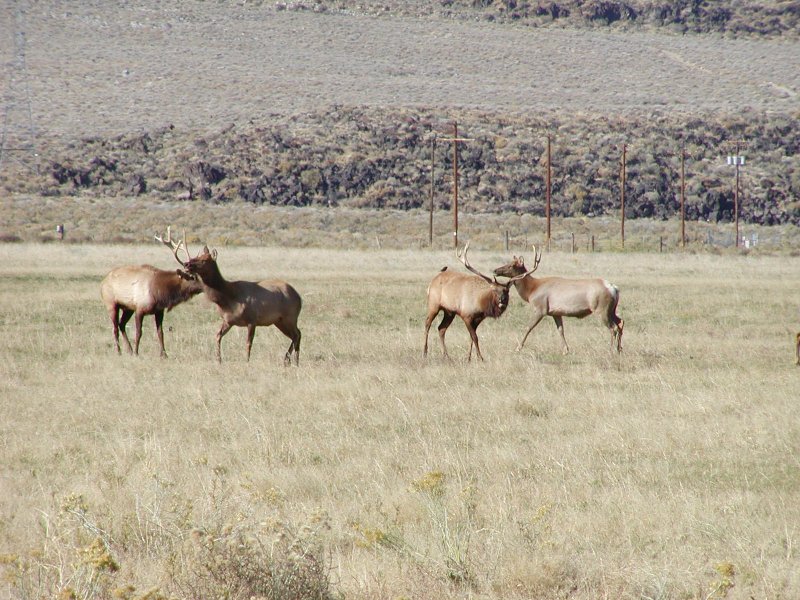 |
| |
| Below the two begin to rattle
horns and make threats. You can also see the group of cows begin
moving away toward the North. They've seen this before and know to
keep their distance until the argument is settled. |
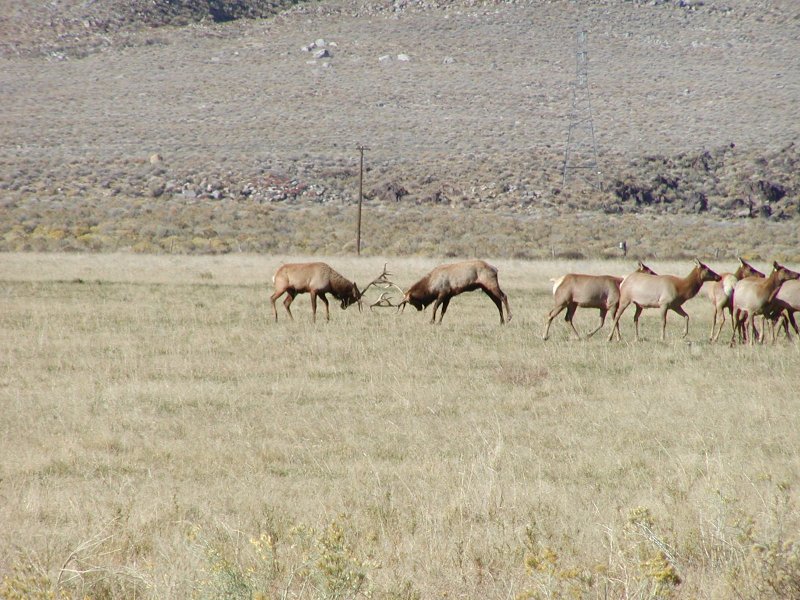 |
| |
| The photograph below shows the
size of the antlers on each bull. The body sizes of the two were
similar, but the bull on the left below had the advantage in antler size. |
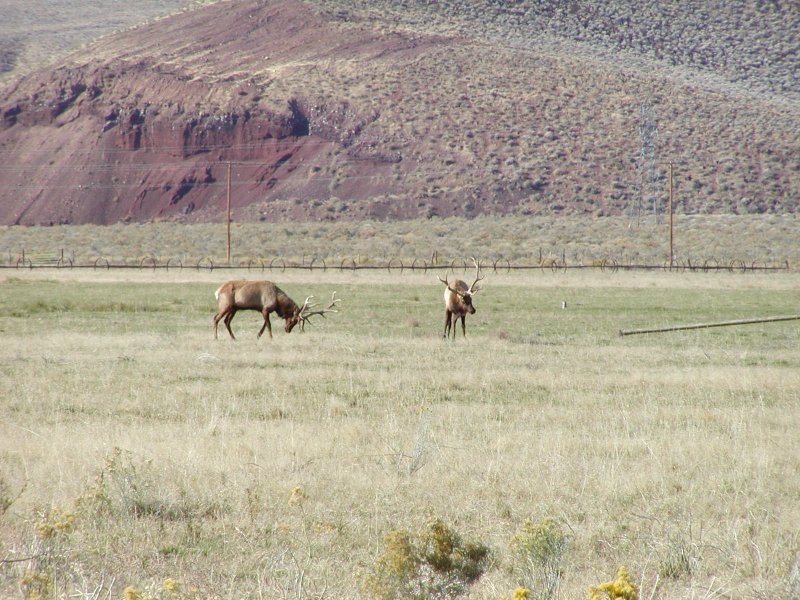 |
| |
| Another view shows the
impressive antler spread! |
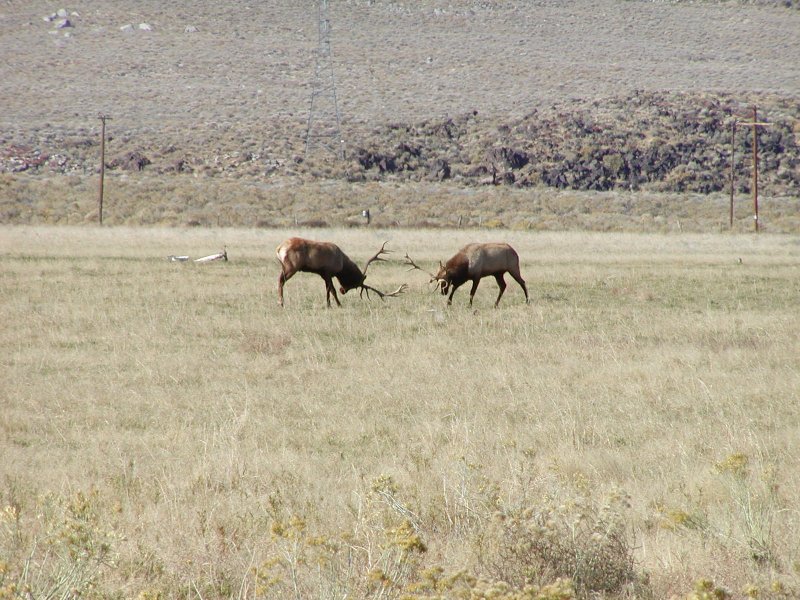 |
| |
| My position has not moved in
the photograph below, but you can see that the two bulls have changed their
position. In fact they are pushing and pulling each other around a
large area of the field. So far most of this has been limited to
antler rattling, grunting, and chasing each other around. |
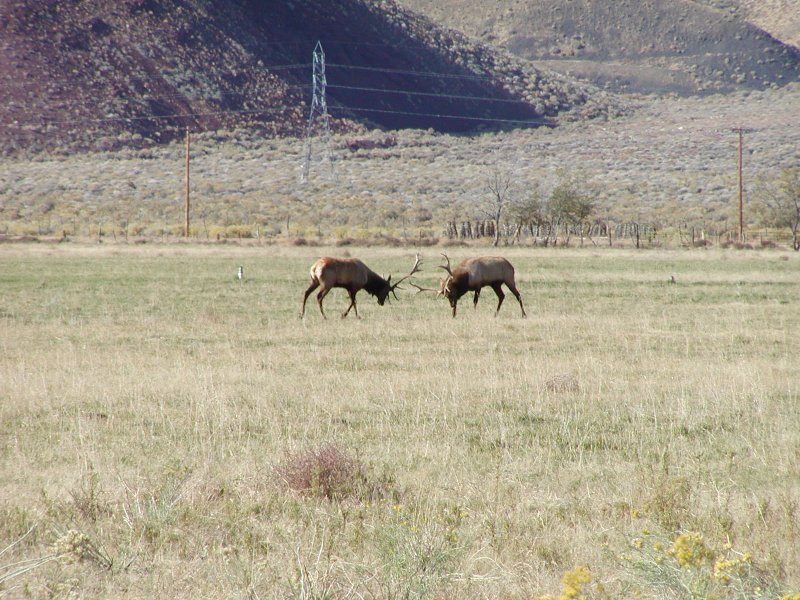 |
| |
| At one point the smaller bull
tries to use a section of irrigation equipment to gain some protection from
his opponent. They battled across this pipe for some time, rolling it
back and forth with the weight of their bodies. |
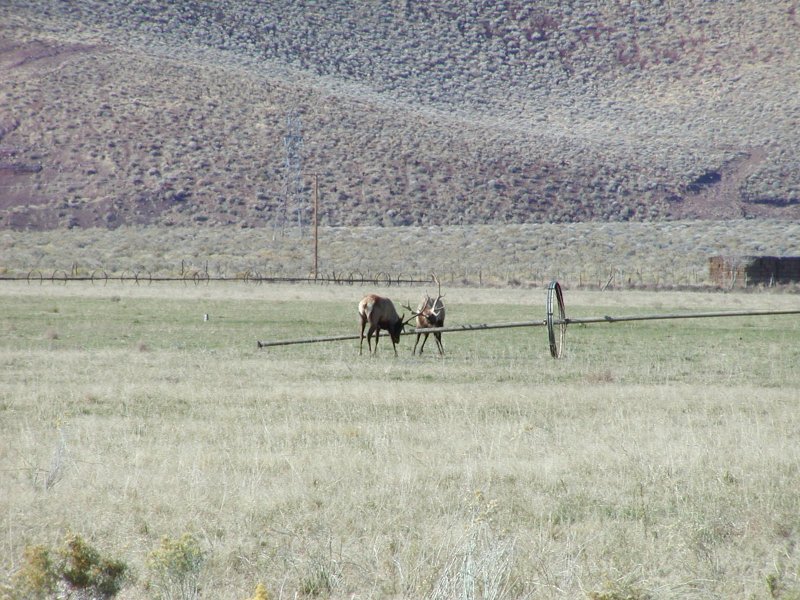 |
| |
| The bigger bull manages to get
around the irrigation pipe barrier and has the opponent on the run - for the
moment. |
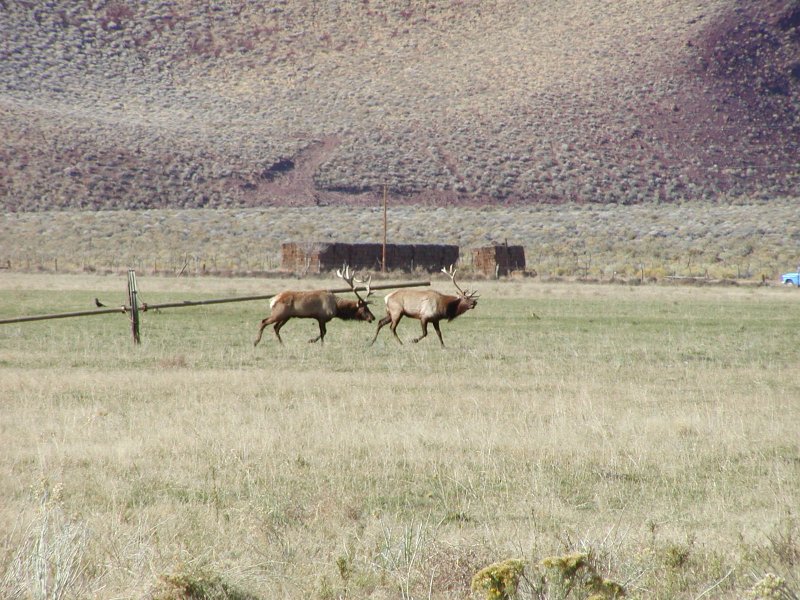 |
| |
| But the challenger is not
giving up yet. He turns suddenly and stands his ground. From 300
yards away we can clearly hear the clatter of the antlers and the huffing
and puffing. |
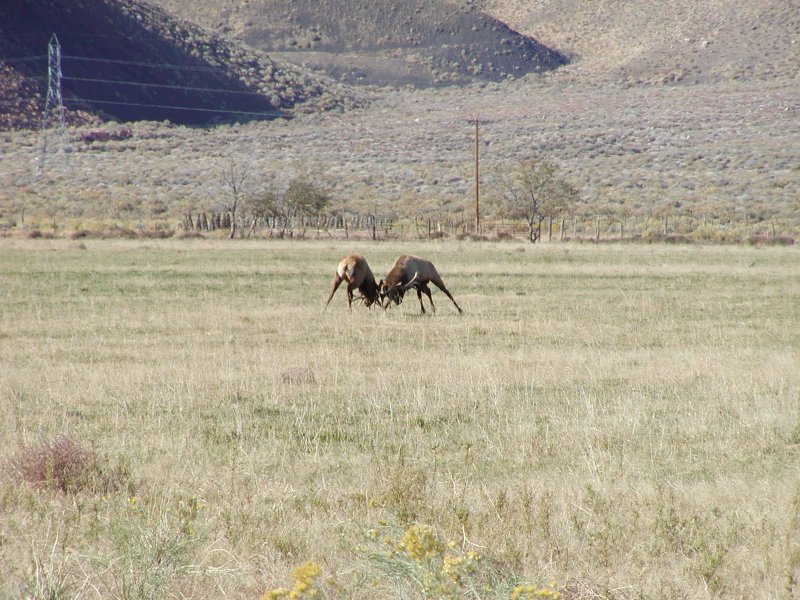 |
| |
| From this angle you can see the
weight is off of their front legs and they are putting their full body mass
into the blows. No more threats and bluffs, now it is getting serious. |
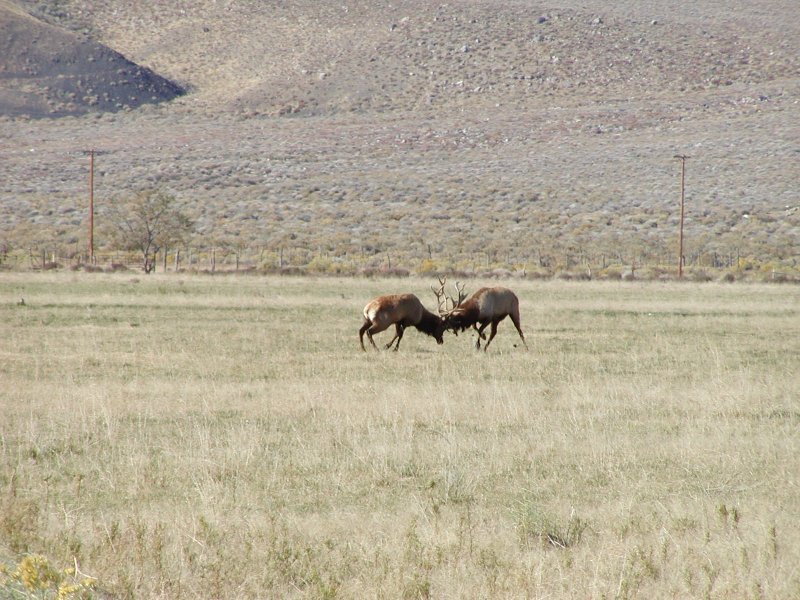 |
| |
| These fights don't generally
last long, particularly now when the rut is finished, and in an instant this
one was over. This one is over in about 2 minutes, using my camera clock as
an estimate, and the winner gathers his cows. A bit of bugling continued
while the loser followed along at a more respectful distance. This is
a very nice bull Elk! |
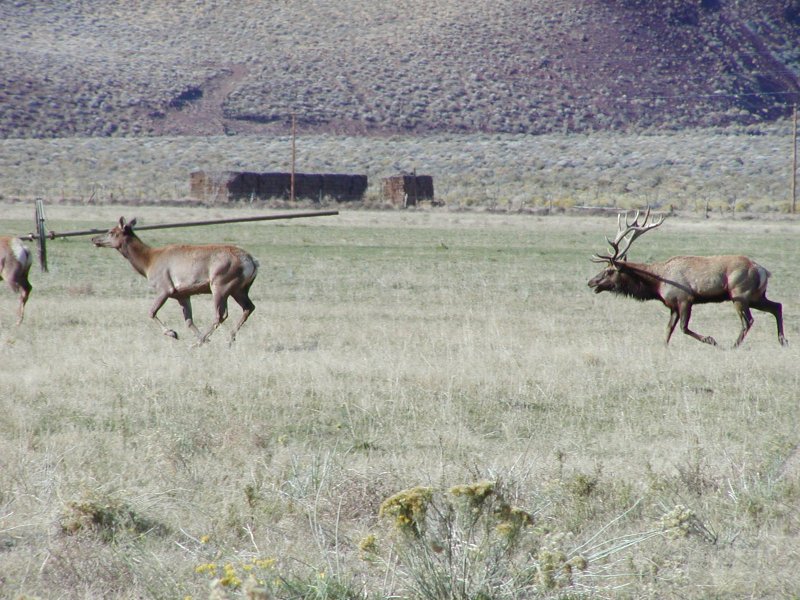 |
| |
About the Owens Valley
The Owens Valley of California has long been considered a Sportsman's
paradise. It stretches north to south along the Eastern divide of the
Sierra mountain range. Bounded on the west by the 14,000 ft peaks of
the Sierra, on the east by the White mountains and to the south by the
Mojave desert. The Tule Elk found here are a smaller species than the
more common Rock Mountain Elk or Roosevelt Elk, with adult males weighing as
much as 700 pounds. The Tule Elk are not native to the Owens Valley,
but are native to the valleys to the west of the Sierra, including primarily
the San Joaquin Valley and westward to the Pacific Ocean. Primarily an
inhabitant of open valleys, the peaks of the Sierra were a barrier to
eastward migration. The important agricultural development of the San
Joaquin Valley put the Tule Elk species at risk. While the Rocky
Mountain Elk prefers the habitat of the highest mountain slopes where few
people live or work, the Tule Elk habitat is at direct conflict with the
interests of humans in California. Although protections were enacted
in the late 1800's, the real problem of suitable habitat remains. Tule
Elk were introduced into the Owens Valley in 1934 to help provide a habitat
suitable for the protection of the species. The Elk have thrived in
the Owens Valley to the point that limited hunting opportunities provided by
the CA DFG.If you go
The Owens Valley Elk can be observed anywhere along U.S. Highway 395
from approximately the town of Olancha in the south, to as far north as the
town of Bishop. Your chances will be improved if you watch for the
"ELK" signs provided by Caltrans. I have rarely seen a few Elk to the
east of the highway in the Sage brush, but by far the most common viewing
opportunities will be on the Alfalfa fields on the west side of the highway.
These fields are scattered between points just north of the town of Lone
Pine to just south of the town of Big Pine. |
| |











